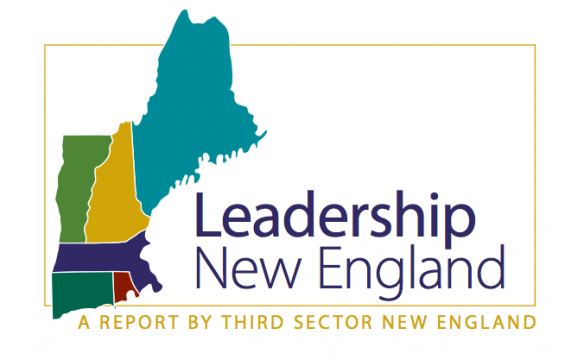 Boston University’s Questrom School of Business hosted a panel discussion with nonprofit leaders to discuss a report on nonprofit leadership in New England, published by Third Sector New England. The discussion was lively, focusing a lot on nonprofit sustainability, and with people sharing lots of opinions on what works and where there are challenges with the current state of nonprofit leadership.
Boston University’s Questrom School of Business hosted a panel discussion with nonprofit leaders to discuss a report on nonprofit leadership in New England, published by Third Sector New England. The discussion was lively, focusing a lot on nonprofit sustainability, and with people sharing lots of opinions on what works and where there are challenges with the current state of nonprofit leadership.
Hez Norton, who is the Director of Partnerships and Leadership Initiatives at Third Sector New England, co-wrote the report and shared the three key findings gleaned from the survey.
Of the leaders who responded to the survey, 64% said they will be leaving within five years and 30% within two years, but organizations are not well-prepared to transition after their departure. Approximately two-thirds of leaders and board members admit that there is no succession plan in place.
Conclusion: More support must be devoted to organizations to develop sustainable strategies for succession. There needs to be more leadership development of others within the organizations so that leadership becomes shared and not all responsibility rests with one person. Can an organization, for example, function effectively and others from within lead it if there is no executive director for a short period of time?
51% of leaders and 54% of board members ranked fundraising as the most pressing challenge for leadership. Leaders feel their boards are ineffective at helping with this; boards want to help but don’t feel like they know how. Currently, there is too much emphasis on short-term goals of fundraising and not enough on long-term strategies for sustainability.
Conclusion: “The expectations and responsibilities of boards need to shift in favor of governance over fundraising, and that means developing a shared vision for the organization, along with strategies to implement that vision, achieving operational excellence, and finding the resources to support that work.”
Nearly half (49%) of organizations have 3 months or less of cash flow and 1 in 5 (21%) have less than a month of cash reserves. Two-thirds of leaders make less than $100,000 in salary and 22% earn less than $50,000. Only 54% of organizations include professional development in their budgets for their leaders.
Conclusion: Nonprofits can deliver the most meaningful programs in the world to their constituents, but a great organization is not measured alone by the value of what it offers. The mantra of “deliver more with less” (i.e. reduce overhead to the bare minimum) doesn’t work and isn’t sustainable. To be sustainable, organizations must invest in themselves, which includes compensating staff well and devoting resources to their professional development.